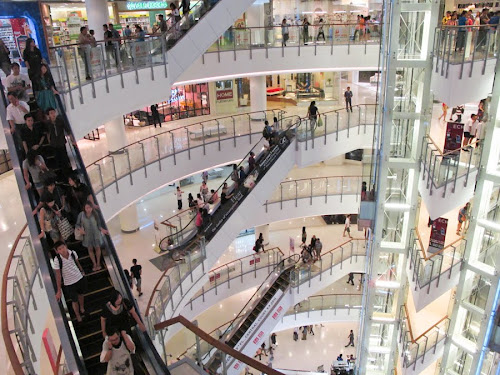
The huge reclining Buddha at Wat Pho
Central World Plaza shopping mall
Benjasiri Park near Sukhumvit Road
View from Lebua Tower, hotel featured in Hangover 2
At the Grand Palace...
coming into Bangkok via train
Bangkok's Democracy Monument
People often complain about Bangkok's traffic...and for good reason...
Example of typical Bangkok gridlock traffic - a problem nicely rectified by taking the city's above ground monorail as seen above and below or by hopping on the back of one of the many motorcycle taxis, which will weave in and out of traffic and even zoom onto sidewalks.
A South Indian temple
One of many bars lining Soi Cowboy
Off of Khaosan Road - an street crammed with t-shirt stalls, gift shops, street food and pubs for tourists and backpackers was Soi Rambutri, a really relaxing, shady area consisting of a horseshoe brick road circling around a monastery and lined with the cheapest guest houses in Bangkok, restaurants, internet cafes, bars, more t-shirt stalls, VW bus bars, travel agents, etc. I found a particularly off-the-beaten track, dirty and cheap guest house through an alley past some clothing vendors. This was the staircase leading down to the bathrooms from my room. (I stayed at this place during one of my four stopevers in Bangkok, after I had been to Japan and was thus trying to save what little money I had left.) The bathrooms did not smell good. You can actually see a urinal in the photo.
Bangkok's Suvarnabhumi Airport
Layover in Seoul at Incheon Airport







































